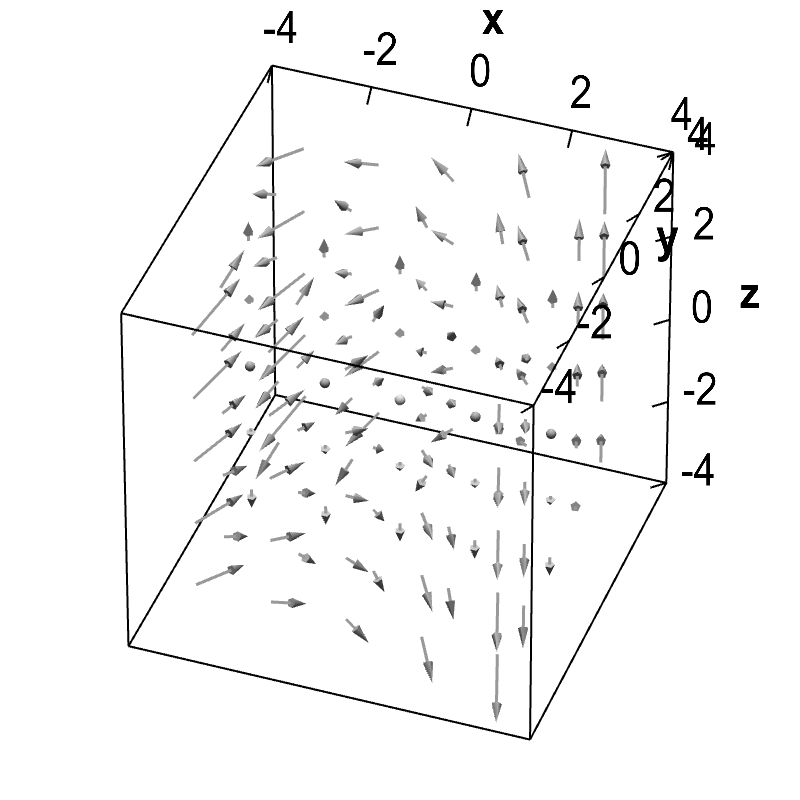Divergence and curl example
Formulas for divergence and curl
For $\dlvf: \R^3 \to \R^3$ (confused?), the formulas for the divergence and curl of a vector field are \begin{align*} \div \dlvf &= \pdiff{\dlvfc_1}{x} + \pdiff{\dlvfc_2}{y} + \pdiff{\dlvfc_3}{z}\\ \curl \dlvf &= \left(\pdiff{\dlvfc_3}{y}-\pdiff{\dlvfc_2}{z}, \pdiff{\dlvfc_1}{z} - \pdiff{\dlvfc_3}{x}, \pdiff{\dlvfc_2}{x} - \pdiff{\dlvfc_1}{y} \right). \end{align*} (The formula for curl was somewhat motivated in another page.) An alternative notation for divergence and curl may be easier to memorize than these formulas by themselves.
Given these formulas, there isn't a whole lot to computing the divergence and curl. Just “plug and chug,” as they say.
Example
Calculate the divergence and curl of $\dlvf = (-y, xy,z)$.
Solution: Since \begin{align*} \pdiff{\dlvfc_1}{x} = 0, \qquad \pdiff{\dlvfc_2}{y}=x, \qquad \pdiff{\dlvfc_3}{z}=1 \end{align*} we calculate that \begin{align*} \div\vc{F} = 0 + x + 1 = x+1. \end{align*} Since \begin{align*} \pdiff{\dlvfc_1}{y} = -1, \pdiff{\dlvfc_2}{x}=y,\\ \pdiff{\dlvfc_1}{z} =\pdiff{\dlvfc_2}{z} = \pdiff{\dlvfc_3}{x}=\pdiff{\dlvfc_3}{y}=0, \end{align*} we calculate that \begin{align*} \curl\dlvf = (0-0, 0-0, y+1) = (0,0,y+1). \end{align*}
Good things we can do this with math. If you can figure out the divergence or curl from the picture of the vector field (below), you doing better than I can.

Applet loading
Example three-dimensional vector field. The structure of the vector field is difficult to visualize, but rotating the graph with the mouse helps a little.
Thread navigation
Multivariable calculus
Math 2374
- Previous: Divergence and curl notation
- Next: Subtleties about divergence
Similar pages
- Divergence and curl notation
- The idea of the divergence of a vector field
- Subtleties about divergence
- The idea of the curl of a vector field
- Subtleties about curl
- The components of the curl
- Vector field overview
- Vector fields as fluid flow
- The idea behind Green's theorem
- The definition of curl from line integrals
- More similar pages